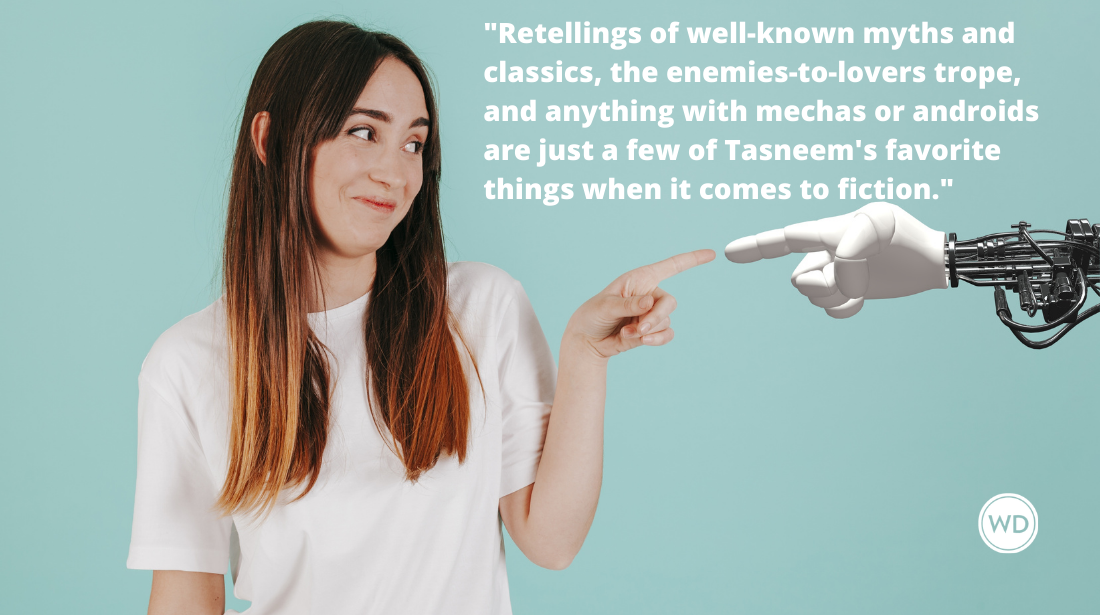Between Acceptance and Final Product: What Happens After You Sell Your Book
Back in 2007, midway through querying my first novel and drafting my second, I attended the Viable Paradise Writer’s Workshop in Martha’s Vineyard. During the course of one intensive week, I attended a workshop by Jumper author Stephen Gould designed to help our select group of aspiring Science Fiction and Fantasy writers understand what life was like after publication. At the time, this workshop seemed a waste of important writing time. Weren’t we all there because we were unpublished newbies? We just wanted to know how to write good queries, network, and get somebody—anybody—to read and love our little word-babies. A year and a half later, when my acceptance letter came, I wished I’d listened better to that lecture…
Back in 2007, midway through querying my first novel and drafting my second, I attended the Viable Paradise Writer’s Workshop in Martha’s Vineyard. During the course of one intensive week, I attended a workshop by Jumper author Stephen Gould designed to help our select group of aspiring Science Fiction and Fantasy writers understand what life was like after publication.
At the time, this workshop seemed a waste of important writing time. Weren’t we all there because we were unpublished newbies? We just wanted to know how to write good queries, network, and get somebody—anybody—to read and love our little word-babies. A year and a half later, when my acceptance letter came, I wished I’d listened better to that lecture...
Order a copy of Kim Vandervort's Outcast today.
Amazon
[WD uses affiliate links.]
Until that day, I’d never thought beyond that all-important acceptance. I’d worked so hard writing, editing, researching, and querying, fighting the urge to give up after every rejection, that I’d never once considered that there would be actual work to come after the acceptance.
The first thing I discovered was that my book wasn’t done yet. While my editor loved my story, I needed to cut my word count down, which meant scrapping scenes, characters, and even individual words. This meant at least two more rounds of significant revisions on my part, with the help of my writing group and friends, before I could tailor that novel into shape.
After some back and forth with my editor about major changes, there were line edits. While looking for flaws in spelling, punctuation and grammar, I also found little word choice changes that needed to happen in order to improve the story. I spent countless hours cleaning up the draft and returned a much slimmer, tighter draft of 135,000 words.
Then we talked cover art. Coming up with a cover involved many hours of discussion about aspects of publishing I knew nothing about. Was there a particular scene I wanted to depict on the cover? I hadn’t thought about it. What mood did I want the cover to convey? Because my first novel was a YA/ Adult crossover, what audience was I aiming for? Even questions about the positioning of my name boggled my brain. Not every author is fortunate to have this much input about the cover; still, it was a lot to think about, and I realized that I had neither the marketing, nor the business expertise to help me make these decisions.
About a month or so later, my edits came back like a recurring nightmare, only this time, in the form of page proofs. Opening my proof copy for the first time gave me a little thrill: here was my book, looking like a book! And… was that a typo? Yes, friends, it was time again to edit. Not only was I looking now for typos, but this was my last chance to change up words or phrases before the final copy. I agonized over this process in particular, knowing that when I was done, this version would go to the readers. No pressure!
Even more terrifying was the next step: sending Advanced Readers to reviewers. The wait for reviews was agonizing. I checked my email every day to see if any word had come through. When the review from Booklist finally came it was a good one, and I felt like I had just passed an important test. But would the readers like my work, too.
To answer that question, we had to get the book in front of readers. The final, and hardest, part of the publication process for most writers is marketing. More and more, authors are expected to take on a significant portion of the marketing responsibilities on our own. While my publisher set up a book launch and some signings, I had to work on my own personal marketing strategies. What was my website going to look like? How would I set it up and maintain it? How could I use social networking to my advantage? All questions I had never considered, and didn’t quite know how to answer.
With three novels under my belt, I am much more prepared for the process than I was that first time, and I’ve made it my goal to warn newly published writer-friends that the struggle doesn’t end with the acceptance letter. That’s when the real work begins. As writers, it is important to prepare for the business aspect of publishing, that act of taking the creative product and turning it, through months of additional work and careful packaging, into a valued commodity. The more we know, the more we prepare, the more successful the process—and the novel—will be.
So when that letter or phone call comes, jump around and do the happy dance. You’ve earned it!
Then, get back to work.
Kim Vandervort has completed three novels and a smattering of short fiction, all in the fantasy genre she adored as a young reader. Her most recent novel, OUTCAST (Oct. 2013, Hadley Rille Books), is a Young Adult novel published in the same fantasy world as her critically-acclaimed first novel, The Song and the Sorceress. When not writing, Kim teaches English Composition at California State University, Fullerton, where she earned a Master’s degree in Medieval Literature in 1999. She currently resides in Corona, California. Connect with her on Twitter.







